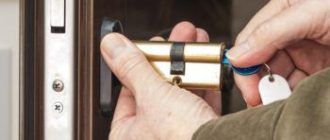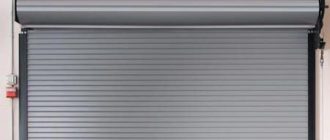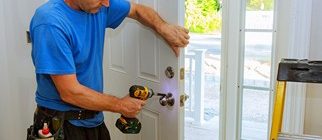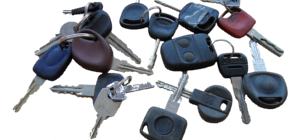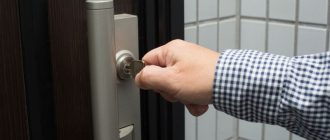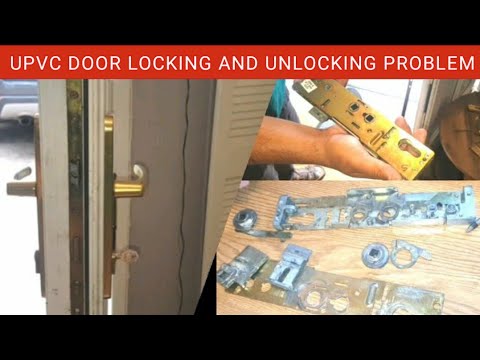
How To Change Locks On The New House Doors
When moving into a new house, one of the first steps to ensure the safety and security of your property is to change the locks on the doors. This is an important task that should not be overlooked, as it helps to prevent unauthorized access and provides peace of mind for you and your family.
In this step-by-step guide, we will walk you through the process of changing locks on new house doors. We will cover everything from choosing the right locks to removing the old ones and installing the new ones. Whether you are a first-time homeowner or simply looking to upgrade your security, this guide will provide you with all the information you need.
First, it is essential to determine the type of locks you want to install. There are a variety of locks available on the market, including deadbolts, knob locks, and smart locks. Each type has its own advantages and disadvantages, so it’s important to consider factors such as security, convenience, and budget when making your decision.
Once you have selected the locks, the next step is to remove the old ones. This can be done by unscrewing the screws on the interior and exterior plates of the lock. Make sure to keep all the hardware and screws in a safe place, as you may need them when installing the new locks.
Finally, you can begin installing the new locks on the doors. Follow the manufacturer’s instructions carefully, ensuring that the lock is properly aligned and securely attached. Test the lock to make sure it functions smoothly and securely.
Changing locks on new house doors is a crucial step in enhancing the security of your home. By following this step-by-step guide, you can ensure that your property is protected and enjoy peace of mind knowing that you have taken the necessary precautions. Remember, when it comes to the safety of your loved ones and your belongings, it’s always better to be safe than sorry.
Prepare Necessary Tools
In order to change the locks on the new house doors, you will need the following tools:
1. Screwdriver – This tool will be used to remove the screws from the old locks and install the new locks.
2. Lockset – Purchase a new lockset that fits the size and type of your doors. Make sure to choose a lockset that provides the level of security and functionality you desire.
3. Measuring tape – Use a measuring tape to determine the dimensions of your doors and ensure that the new lockset will fit properly.
4. Pencil – Mark the desired locations for your new lockset using a pencil. This will help guide the installation process.
5. Hammer – If necessary, use a hammer to remove any stubborn screws or hardware from the doors.
6. Lubricant – Apply lubricant to the lock mechanism to ensure smooth and efficient operation.
Once you have gathered all the necessary tools, you will be ready to proceed with changing the locks on your new house doors.
Remove Existing Door Locks
Before you can change the locks on your new house doors, you need to remove the existing locks.
Here’s how you can do it:
- Start by removing the screws on the existing door lock plate.
- Once the screws are removed, use a flathead screwdriver to pry off the lock plate.
- Next, locate the screws on the interior side of the door and remove them.
- Now, use a screwdriver to remove the screws on the exterior side of the door.
- Once all the screws are removed, carefully pull out the old lock mechanism from both sides of the door.
- Make sure to discard the old lock properly.
By following these steps, you can easily remove the existing door locks and prepare your new house doors for a lock change.
Measure the Door Lock Size
Before you can change the locks on your new house doors, you need to measure the size of the existing door locks. This step is crucial to ensure that you purchase the correct replacement locks.
To measure the door lock size, follow these steps:
- Remove any existing door hardware, such as the doorknob or deadbolt, to expose the lock.
- Measure the backset, which is the distance from the edge of the door to the center of the lock hole. Common backset sizes are 2 3/8 inches or 2 3/4 inches.
- Measure the diameter of the lock hole. This measurement will determine the size of the replacement lock.
- Measure the overall dimensions of the lock faceplate, including the length and width.
Once you have these measurements, you can use them to purchase the right size of lock for your doors. It’s important to note that different doors may have different lock sizes, so make sure to measure each door individually.
If you are unsure about how to measure the door lock size or choose the right replacement locks, it’s recommended to consult a professional locksmith for assistance.
Purchase New Door Locks
Changing the locks on new doors is an important step in securing your home. To ensure the safety of your property and loved ones, it is crucial to have new locks installed.
When purchasing new door locks, there are a few factors to consider. First, you should determine the type of locks you want. There are various options available, such as deadbolts, knob locks, and smart locks. Make sure to choose a lock that meets your security requirements.
In addition to the type of lock, you should also consider the quality and durability. Investing in high-quality locks will provide better protection against break-ins and ensure long-lasting performance.
Before making a purchase, measure the door thickness to ensure compatibility. Some locks may only be suitable for specific door thicknesses, so it’s important to check the specifications before buying.
Furthermore, consider the finish of the locks to match the overall aesthetic of your doors. Common finishes include brass, nickel, and bronze. Select a finish that complements your home’s style and enhances its appearance.
Finally, it’s important to buy locks from reputable brands and retailers. Look for trusted manufacturers that have a track record of producing reliable and secure lock products.
By following these guidelines, you can purchase new door locks that provide maximum security and peace of mind for you and your family.
Read the Installation Instructions
Before starting the process of changing the locks on the doors of your new house, it is important to read the installation instructions thoroughly. Understanding the steps and guidelines provided by the lock manufacturer will help ensure a successful lock change.
The installation instructions will often include important information about the type of tools required, the specific steps to follow, and any additional precautions that need to be taken. It is crucial to carefully read and follow these instructions to avoid potential damage to the locks, doors, or other components of your house.
Here are some key points to keep in mind when reading the installation instructions:
- Tools: Take note of the tools mentioned in the instructions. Make sure you have all the necessary tools or consider purchasing them before starting the lock change process.
- Step-by-step guide: Follow the outlined steps provided in the instructions. Pay attention to any specific order or techniques mentioned to ensure a smooth and efficient installation.
- Precautions: The installation instructions may include important precautions or warnings. These can involve safety measures or ways to avoid common mistakes. It is essential to take these precautions seriously to prevent accidents or damage.
- Troubleshooting: Some lock installation instructions may also offer troubleshooting tips or solutions for common installation issues. Familiarize yourself with these troubleshooting guidelines to address any potential problems that may arise.
By reading and understanding the installation instructions provided with your new locks, you will be better prepared to successfully change the locks on your house doors. This step-by-step guide will help you ensure the security and peace of mind in your new home.
Remove the Old Strike Plate and Latch
Before installing new locks on your new house doors, you need to remove the old strike plate and latch. Follow these steps:
- Prepare your tools: screwdriver, pliers, and a hammer.
- Locate the screws that secure the old strike plate to the door jamb, and use the screwdriver to remove them.
- Next, use the pliers to remove the old latch from the edge of the door.
- If the latch is stubborn, you can use the hammer to gently tap it out from the door edge.
- Once the latch is removed, inspect the area to ensure it is clean and free from any debris.
Removing the old strike plate and latch is an essential step before installing new locks on your new house doors, as it ensures a clean and smooth installation process.
Install the New Strike Plate and Latch
Once you have removed the old locks from the doors of your new house, it’s time to install the new strike plate and latch. Follow these steps:
- Begin by inserting the new latch into the hole on the edge of the door where the old latch used to be. Make sure the slanted side of the latch faces the direction that the door closes.
- Next, position the strike plate on the door jamb, aligning it with the latch. Use a pencil to mark the screw holes on the jamb.
- Use a drill to create pilot holes for the screws, using the pencil markings as a guide.
- Secure the strike plate to the jamb by screwing it in place.
- Test the latch to ensure that it properly closes and aligns with the strike plate. If necessary, adjust the position of the strike plate or latch until they align correctly.
By following these steps, you can easily install the new strike plate and latch on the doors of your new house, providing added security and peace of mind.
Align the New Door Lock
Once you have chosen and purchased new locks for your house, it is important to properly align them on the doors. Aligning the new door locks will ensure that they function correctly and provide the desired level of security.
Here is a step-by-step guide on how to align the new door lock:
- Remove the existing lock: Before you can align the new door lock, you must first remove the old one. Use a screwdriver to unscrew the screws on the plate of the existing lock. Once the screws are removed, carefully take off the plate and set it aside.
- Position the new lock: Take the new lock and position it on the door where you want it to be installed. Ensure that it is centered and level, as this will affect its functionality.
- Outline the lock: Using a pencil or marker, outline the edges of the lock on the door. This will help you position it accurately during the installation process.
- Make adjustments if needed: If the lock does not align perfectly, you may need to make some adjustments. Use a chisel or utility knife to carefully shave off any excess material that is preventing the lock from aligning properly.
- Secure the lock in place: Once you are satisfied with the alignment, secure the lock in place by screwing in the provided screws. Ensure that the screws are tightened securely, but be careful to not over-tighten them as this can damage the lock or the door.
- Test the lock: Finally, test the newly aligned lock to make sure it is functioning correctly. Insert the key and turn it to lock and unlock the door. Check that the latch smoothly moves in and out, and that the bolt fully extends into the door frame.
By following these steps, you can successfully align the new door lock on your house and enhance the security of your home.
Mark the Lock Position on the Door
One of the first steps in changing locks on new house doors is to mark the position of the lock on the door. This will ensure that the new lock is properly aligned and functions correctly. Here is how to do it:
- Close the door and stand on the side where you want the lock to be installed.
- Take the new lock and hold it against the door at the desired height.
- Use a pencil or marker to trace around the lock’s faceplate on the door.
- Remove the lock from the door and double-check that the marked area is centered and at the correct height.
- If needed, make any adjustments to the marked area.
By marking the lock position on the door, you can ensure that the lock is installed correctly and securely. This step is crucial in the process of changing locks on new house doors.
Drill Holes for the New Lock
Once you have chosen the new lock for your house doors, it’s time to start the installation process. The first step is to drill the necessary holes to accommodate the new lock. Here’s how to do it:
- Begin by marking the proper placement for the new lock on the door. Use a measuring tape and a pencil to ensure accuracy.
- Take the drill and attach the appropriate size of hole saw bit. The size will depend on the specifications of your new lock.
- Secure the door with clamps or have someone hold it steady to prevent any movement while drilling.
- Start drilling the hole for the lock’s latch. Make sure to hold the drill straight and apply consistent pressure until the hole is complete.
- Next, drill the hole for the lock’s deadbolt. This hole should be larger in diameter than the latch hole.
- Clean up any wood debris or shavings from the drilled holes.
- Test the fit of the lock components in the drilled holes. The latch and deadbolt should slide in smoothly without any obstructions.
By following these steps, you can successfully drill the necessary holes for your new lock. This ensures a proper fit and secure installation for your house doors.
Install the New Door Lock
Once you have decided to change the locks on your new house doors, it’s important to understand how to properly install the new lock. Follow these steps to ensure a successful installation:
Step 1: Choose the Right Lock
Before you can install the new door lock, make sure you have chosen the right lock for your house. Consider factors such as security, style, and material. You can consult a professional locksmith or hardware store for guidance.
Step 2: Gather the Tools and Supplies
Make sure you have all the necessary tools and supplies before beginning the installation process. This may include a screwdriver, drill, screws, latch, strike plate, and of course, the new lock. Double-check to ensure you have everything you need.
Step 3: Remove the Old Lock
Start by removing the old lock from the door. Unscrew the screws that hold the old lock in place and remove the latch and strike plate. Be careful not to damage the door or surrounding area during this process.
Step 4: Prepare the Door and New Lock
Prepare the door and the new lock for installation. Remove any debris or old screws from the door. Ensure that the new lock fits properly in the door’s existing holes and aligns with the strike plate.
Step 5: Install the New Lock
Begin by inserting the latch into the door, ensuring that it is flush with the door’s edge. Secure it in place using the screws provided. Then, place the strike plate on the door frame and make sure it aligns with the latch. Screw it into place as well.
Step 6: Test the New Lock
After installing the new lock, test it to make sure it functions properly. Turn the knob or use the key to lock and unlock the door several times. Check that the latch extends and retracts smoothly, and that the door locks securely.
Step 7: Dispose of the Old Lock
Properly dispose of the old lock and any other related materials. Make sure to follow local regulations for disposal or recycling of these items.
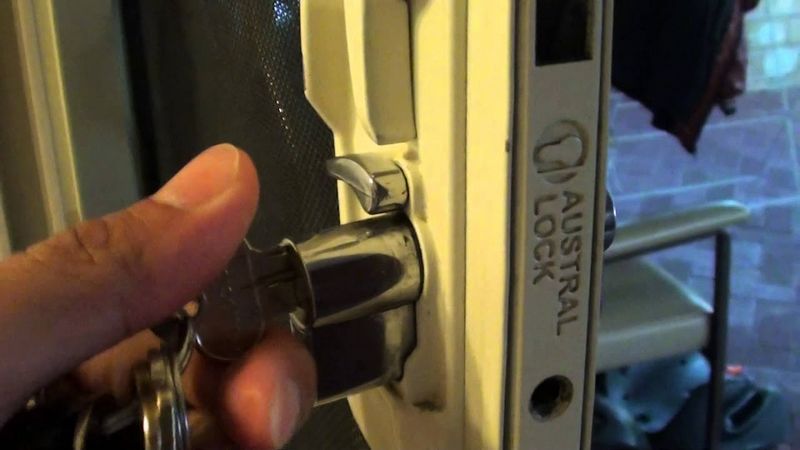
By following these steps, you can successfully install the new door lock in your house and enhance the security of your new home.
Test the Door Lock Functionality
After installing new locks on the doors of your house, it’s important to test their functionality to ensure they work properly. Follow these steps to test the door locks:
|
1. Close the door fully |
|
2. Insert the key into the lock and turn it in both directions to make sure the lock engages and disengages smoothly. |
|
3. Push and pull on the door to check if the lock holds securely and the door does not open when locked. |
|
4. Test the latch by turning the doorknob without turning the lock. The latch should retract smoothly and the door should open easily. |
|
5. Lock the door from the inside and repeat the previous steps to ensure the lock functions correctly from both the inside and outside. |
If any issues are detected during the testing process, it may be necessary to adjust or replace the lock to ensure the security of your new house. It is advisable to consult a professional locksmith if you encounter any difficulties or have concerns about the functionality of your door locks.
Adjust the Strike Plate if Needed
When changing the locks on new house doors, it is important to ensure that the strike plate is properly aligned with the door latch. The strike plate is the metal plate attached to the door frame where the latch bolt fits into when the door is closed and locked. If the strike plate is not properly aligned, the lock may not function correctly, compromising the security of your home.
To adjust the strike plate, follow these steps:
- Remove the screws holding the strike plate in place using a screwdriver.
- Carefully loosen the strike plate and shift it up, down, left, or right as needed to align it with the latch bolt.
- Tighten the screws back into place, ensuring that the strike plate remains securely attached to the door frame.
- Test the lock to make sure that the latch bolt smoothly goes into the strike plate without any resistance or sticking.
By adjusting the strike plate if needed, you can ensure that your new house doors are properly secured and that the locks function as intended. It is a simple and important step in the process of changing locks.
Make Sure the Lock is Secure
Before you begin the process of changing the locks on your new house doors, it’s important to make sure that the lock you choose is secure. After all, the purpose of changing the locks is to enhance the security of your home. Here’s how to ensure that the lock you select is up to the task:
| Step | Instructions |
| 1. | Research different types of locks and their security features. Consider factors such as resistance to picking, bumping, and drilling. |
| 2. | Look for locks that meet industry standards for security, such as those that are ANSI/BHMA certified. |
| 3. | Consider installing a deadbolt lock in addition to the standard lock for added security. Deadbolts are harder to force open. |
| 4. | Check customer reviews and ratings for the lock you are considering. This can give you insights into its performance and durability. |
| 5. | Consult with a locksmith or security professional for expert advice on selecting the most secure lock for your specific doors and needs. |
By taking the time to ensure that the lock you choose is secure, you can have peace of mind knowing that your new house is properly protected.
Keep the Keys in a Safe Place
After you’ve successfully changed the locks on your new house, it’s important to keep the keys in a safe place. Losing or misplacing the keys can be a security risk, especially if the keys fall into the wrong hands. Here are some tips on how to keep your keys secure:
- Choose a secure hiding spot: Avoid obvious hiding spots such as under doormats or flower pots. Instead, consider using a lockbox or a key safe that can be mounted to a wall or hidden in a discreet location.
- Share sparingly: Only give the new keys to trusted individuals. Avoid lending your keys to neighbors or acquaintances unless necessary.
- Label discreetly: If you need to label your keys, avoid including any identifying information such as your address or name. Instead, use generic labels or a numbering system that only you can understand.
- Create duplicates: Consider creating duplicate keys and keeping them in a separate safe location. This can come in handy in case you accidentally lose or lock yourself out.
- Consider a key tracking device: If you’re prone to misplacing keys, you may want to invest in a key tracking device. These devices can be easily attached to your keychain and allow you to track the location of your keys using a smartphone app.
By following these tips, you can ensure that the keys to your new house remain secure and that you have peace of mind knowing that your home is adequately protected.
Q&A:
Can I change the locks on my new house myself, or should I hire a professional?
You can change the locks on your new house yourself if you are comfortable doing so. However, if you don’t have experience with lock installation or if you want to ensure the job is done correctly, it may be best to hire a professional locksmith. A locksmith can provide expertise, proper tools, and ensure the locks are installed securely and function properly. Additionally, hiring a professional may also be necessary if your house has advanced security systems or specialized locks that require specialized knowledge.
Is it necessary to change the locks on my new house doors?
While it is not absolutely necessary to change the locks on your new house doors, it is highly recommended for security purposes. You never know who may have access to the old keys, such as the previous owners, their family members, or even neighbors or contractors. Changing the locks provides you with peace of mind and ensures that you and your family are the only ones with access to your new home. It is a small investment for increased security.

